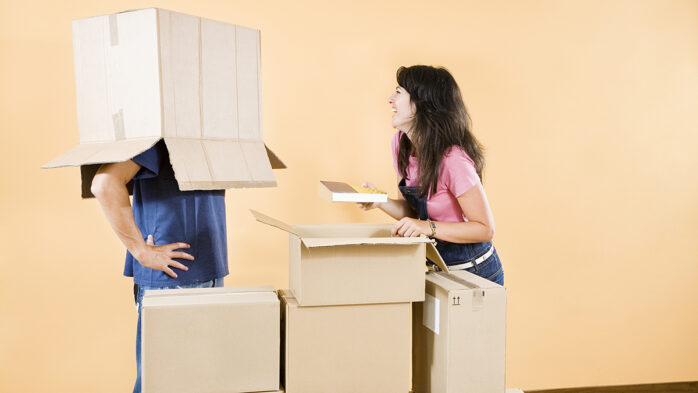
Organising and packing your belongings for a move can be stressful, especially when you have limited time to finish all moving-related tasks. The way you prepare and wrap your belongings, as well as the way you pack different items into your boxes, can significantly impact the success of your move.
If you’re hiring a professional removalist like Whybirds Removals, to help you pack and move your belongings, you won’t have to worry too much about this aspect of the move. However, if you’re opting for a DIY move, it is important to remember that packing your belongings in moving boxes requires strategy and takes the most time and energy. With all the moving related-tasks that you need to complete, making mistakes whilst packing or preparing your items for the move is quite common, especially for those who are moving for the first time.
Here are some of the most common packing mistakes that you need to avoid as your prepare and pack your belongings for your upcoming move:
1. Lack of planning

One of the most common mistakes when packing is not planning how your belongings will be packed in different moving boxes. Whilst it might seem easier to just toss everything in the room in boxes or containers, doing so will result in damage and increase the risk of injury from lifting boxes that are too heavy. If you fail to plan how your items will be packed, you are likely to encounter other issues that might delay other tasks such as not having enough packing materials or enough time to secure appropriate materials for fragile/delicate items.
To avoid delays and unnecessary stress as your moving day approaches, plan the details of your move —including packing your belongings and furniture— ahead of time. It may not guarantee a 100% successful move, but it will give you enough time to figure out the best solution for the challenges you will encounter. As soon as you have a date in mind, start planning which items can be packed first and which ones can stay until your scheduled moving day. When possible, create a timeline for when certain items or areas should be packed.
2. Not giving yourself enough time

Packing is time-consuming. Even if you feel like you don’t have many items to pack, you might still find yourself rushing to pack everything before moving day. Keep in mind that different items have different packing requirements, especially delicate or fragile items that might take longer to pack than others. You must also consider if you have bulky items, electronics, or furniture that you need to disassemble and pack before the moving vehicle arrives.
No matter the size of your move, carefully consider the number of items that need packing and start working as soon as possible. Give yourself enough time to finish packing the items you need to bring in labelled boxes. After all, it won’t be an issue if you manage to finish packing your belongings ahead of time. You can use the remaining time to meet your family and friends or take care of other aspects of the move.
3. Not decluttering

During the duration of your stay in your current home, you’ve probably managed to accumulate some items that are unused or barely used and stored in your attic, garage, or any other storage room. Whilst it’s completely fine to take all of these items with you and get rid of the ones you can’t use in your own home, doing so might cause you to waste packing materials and space on items you won’t need.
Before you start sorting and packing your belongings, take some time to get rid of items that you haven’t used for a long time or items you don’t intend to use in your new home. If you have items that are in very good condition, consider giving them to family and friends or donating them to local charities. You might also want to consider organising a garage sale to generate additional funds for your move whilst getting rid of preloved items.
4. Skimping on packing materials

High-quality packing materials can be costly, but using them to pack your valuables can help in reducing the risk of damage. Whilst it is practical to get used boxes to pack your belongings, there are instances when it’s better to use new and high-quality packing materials for your belongings, especially for heavy or fragile items. Using low-quality materials or not using enough materials to properly wrap and pack your items might also result in broken or damaged items.
No matter the size of your move, it is important to make sure that you have the right amount of high-quality packing materials for all your belongings. If you’re not keen on buying boxes every time you move, opt for sturdy and reusable containers to protect your belongings.
5. Packing carelessly

As you may already know, preparing your belongings for the move does not mean packing all of your belongings in one big container. A lot of people usually end up packing items without care when they are running out of time, settling for at least covering most of the items before tossing them into a box or container. Whilst there are no specific ways how to wrap certain items, you need to make sure that they have enough protection to prevent them from breaking easily in case the box or container is dropped or if the moving vehicle passes through rough roads.
To avoid damages caused by improper packing, it is highly recommended that you look into some packing techniques, especially for fragile and delicate items. It is also important that you wrap items carefully using packing paper or bubble wrap (for fragile items) before packing them into boxes of different sizes. When possible, combine light bulky items and small heavy items in smaller boxes, instead of packing all heavy items together. It helps reduce the risk of dropping the boxes or getting an injury from lifting boxes that are too heavy.










